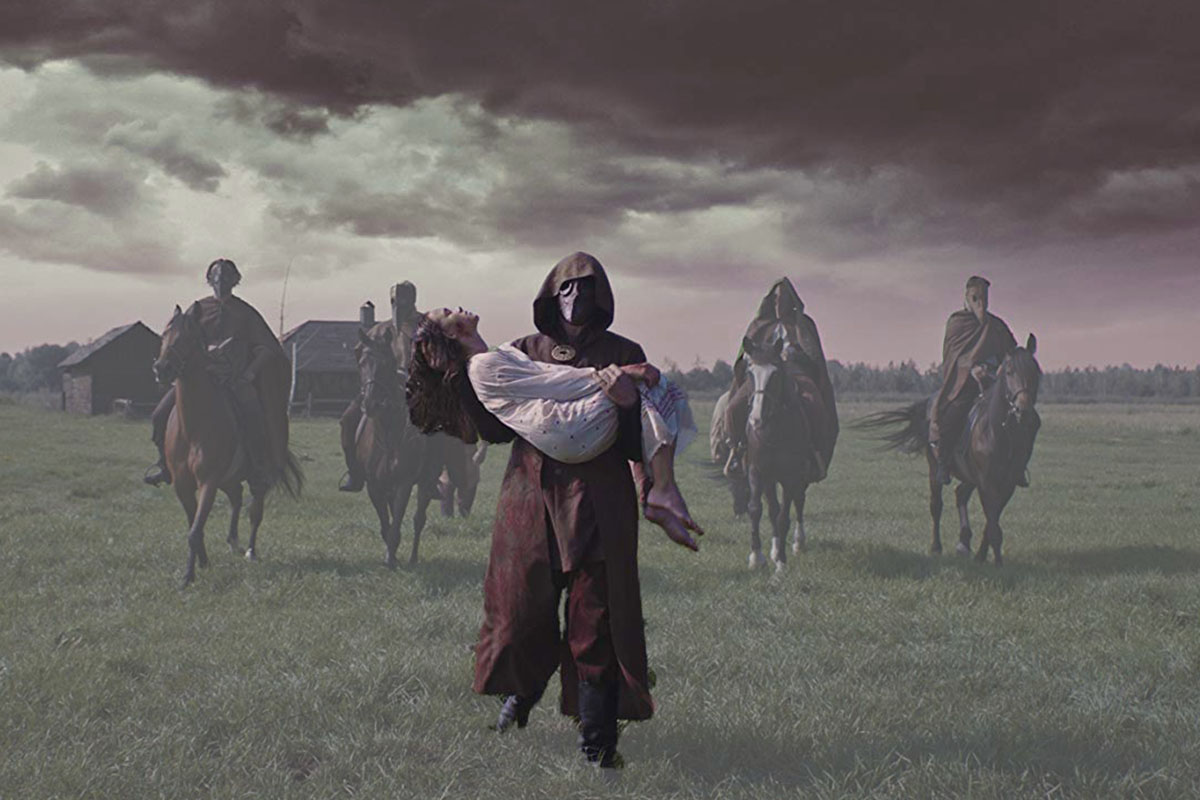The Golem is an odd little Jewish horror movie: It feels like the lovechild of The VVitch and Fiddler on the Roof, but it’s less interested in the horror of the supernatural than the horror of living under the constant threat of pogroms.
Horror movies with Jewish themes (as opposed to Jewish demons mediated through Christian lore) are rare these days, but the first monster movie to hit celluloid was 1915’s The Golem. It was the first of a trilogy of Golem movies, with sequels in 1917 and 1920. (For that matter, Mary Shelley’s Frankenstein may have been partially inspired by golem legends, as filtered through the Brothers Grimm.) Modern horror is returning to its Jewish roots with this film.
The golem is a major figure in Jewish folklore — a human-shaped being built out of clay or mud and brought to life by a rabbi well-versed in Kabbalah in order to protect the Jewish community from harm. The golem cannot speak, since it holds a scroll in its mouth, and has “emet” (“truth”) inscribed on its forehead. In some tales, the golem can be returned to dust by removing the scroll, while in others, one can end its existence by erasing the aleph from its forehead, turning “emet” into “met” (“death”).
2018’s The Golem opens with a gonzo horror scene of a rabbi attempting to put down a golem he can no longer control, while a little girl stands in the wreckage of the synagogue and watches.
Fast-forward to 17th century Lithuania. Hanna (Hani Furstenburg, a dead ringer for Jessica Chastain) and Benjamin (Israeli TV actor Ishai Golan) still grieve the death of their son — who drowned seven years ago — and haven’t been able to conceive another, but their relationship remains strong. Hanna hides in the basement of the synagogue to eavesdrop on Torah study, and Benjamin smuggles her books on Kabbalah in his lunch bucket. After he falls asleep at night, she repairs to the attic to pore over them, hanging complex mystical charts from the rafters.
Then Hanna’s sister’s wedding is interrupted by charging horsemen who demand that the Jews — who don’t have the plague and therefore must be wizards, naturally — heal the leader’s daughter, who’s dying of the Black Plague. If they fail, he’ll destroy the village. Perla, the village midwife/healer/probably-actually-a-witch — and also the now grown-up girl from the prologue — steps forward to shield her community with promises that she will treat the girl, and the menfolk head off to the synagogue to pray.
Hanna strides right in and informs them that their best bet is to make a golem. In between her Kabbalah studies, she’s apparently read all the books about Jewish life in medieval Europe, because she’s clear on how all this ends. The men are appalled at the idea and shoo her out.
She storms on home and makes a golem anyway. Suffice it to say that this is a movie about Jews in Eastern Europe in the 1600s, so it does not have a happy ending (that’s not a spoiler, it’s just history). In between the fire-lit midnight creation of the golem and the credits rolling, there’s a lot of gore: exploding heads, a shofar fountaining blood, hearts ripped from chests, and more because Hanna’s golem son did not come to play.
The film amply delivers on monster-movie fun. Hanna’s readiness to go straight to the nuclear option when confronted with a no-win situation and her impatience with arbitrary patriarchal restraints are cathartic. Hanna was Over It before the movie even started, and when she takes on Vladimir — who led the wedding interruption— head held high, her learned magic a rebuke to his brutish physical violence, it’s hard not to cheer her on.
But underlying the over-the-top violence and sly feints at Ye Olde Shtetl tropes are two different movies. One is historical, and one is supernatural. The twist is that the history is the horror movie, and the supernatural tale is an elegy. The creation of a deadly child-sized automaton is a story mostly about grief; the real horror is anti-Semitism.
Throughout the movie, the imminent pogrom looms. The villagers’ desperate hope that the Christians will relent (I don’t think anyone seriously believes they can cure the plague) is never presented as anything but futile. In their eerie, birdlike plague masks and dark clothing, wielding primitive guns and prone to sudden, unprovoked violence, they are the most terrifying thing in the movie.
Meanwhile, the golem story is told in standard horror movie vocabulary, but is so saturated with Hanna’s longing that from the moment the golem takes the form of her son, rather than the hulking monster she has shaped out of mud, it’s hard not to wish with her that the golem really is that beloved presence returned. Like any ghost story, it plays on the tension of being afraid of what might happen if the dead can come back to us set against the anguished, shamed desire to see them again in whatever form, even if they can only return as monsters.
The Golem ultimately proceeds along a fairly set monster-movie path. Where it stands out is in how it peels back the layers of how most Jewish monster stories — whether it’s golems or dybbuks — seem to ultimately reveal themselves to be ghost stories and far sadder than they are scary. Everything seems to pale next to the very real, non-supernatural threat of human hatred to the point where I sometimes wonder if that’s the only true Jewish horror genre out there.



